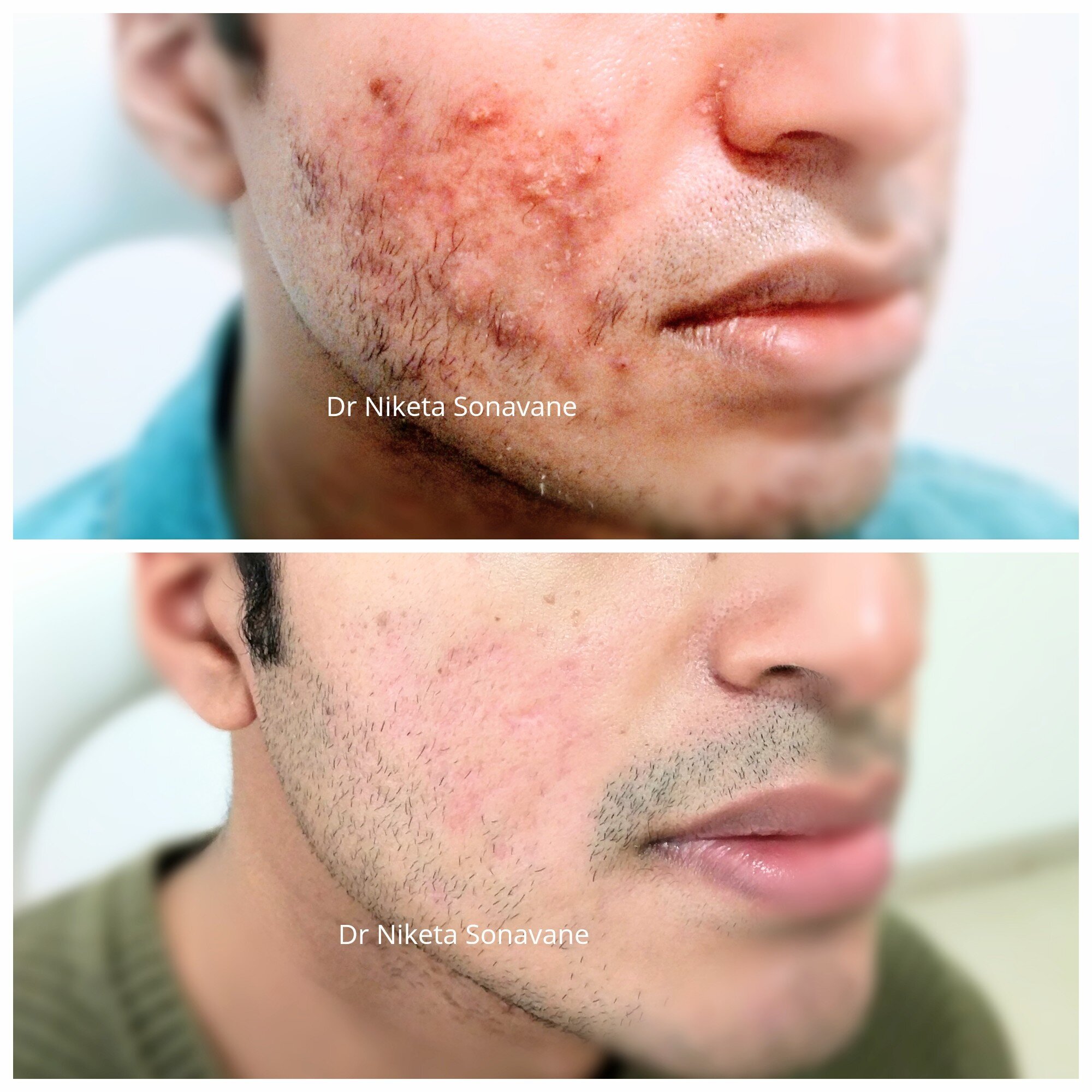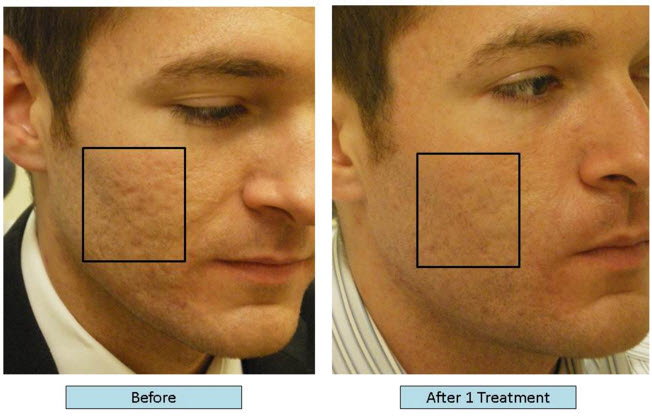Advanced Acne and Acne Scars Treatment: Say Goodbye to Imperfections
Wiki Article
Discovering Skin Conditions: Identifying and Dealing With Acne Scars for Healthier Skin
Acne scars stand for a significant problem for people seeking to keep healthy and balanced skin, as they can affect both appearance and self-esteem. Comprehending the different types of marks, from atrophic to hypertrophic, is essential for figuring out proper treatment alternatives. While expert interventions like chemical peels and microneedling can be effective, the relevance of personalized treatment strategies can not be overemphasized. Preventative actions play an essential duty in lessening future scarring. As we explore these aspects, one must take into consideration how the appropriate technique can result in transformative outcomes.Comprehending Acne Scars
Comprehending acne marks is crucial for any person who has actually experienced serious acne, as these marks can have an enduring effect on both physical appearance and mental well-being. Acne scars develop when the skin undertakes inflammatory responses throughout energetic acne lesions. The extent of scarring is often influenced by factors such as the kind of acne, its duration, and specific skin qualities.The body's natural recovery process can cause either atrophic scars, which appear as depressions in the skin, or hypertrophic scars, which are increased and result from overflow of collagen. In addition, the mental toll of acne scars ought to not be undervalued; many people report feelings of embarrassment, anxiousness, and decreased self-confidence. This emotional concern can impact social communications and overall quality of life.
Addressing acne marks requires a detailed understanding of their formation and effect. Understanding of the capacity for lasting effects related to unattended marks can inspire individuals to look for suitable treatments. Early treatment and efficient administration approaches can considerably enhance skin appearance and boost emotional resilience, emphasizing the relevance of comprehending the intricacies surrounding acne marks.
Sorts Of Acne Scars
Acne scars can be categorized into unique types, each showing one-of-a-kind features and calling for particular treatment strategies. The primary kinds of acne scars include atrophic, hypertrophic, and keloid marks.
Hypertrophic scars, on the other hand, are raised over the skin level and are the outcome of extreme collagen production throughout the healing process. They usually stay within the boundaries of the initial acne lesion. Keloid scars are similar however expand past the initial injury site, developing larger, raised locations that can be uncomfortable or scratchy.
Recognizing these sorts of marks is essential for picking suitable treatment alternatives. Different marks might respond better to specific therapies, such as laser treatments, fillers, or surgical interventions, emphasizing the relevance of a tailored method to acne scar administration.
Recognizing Your Marks
Acne scars generally drop right into 2 categories: atrophic and hypertrophic marks. These can additionally be identified right into ice-pick scars, boxcar marks, and rolling marks, each showing distinct characteristics and requiring various approaches for assessment - skin rejuvenation treatments.Hypertrophic scars, on the various other hand, are elevated and happen due to too much collagen production during the healing procedure. Identifying the specific features of your scars-- such as size, texture, and deepness-- is important for correct identification. In addition, take into consideration the circulation of scars throughout your skin, as this can indicate the seriousness and period of the acne condition.
Engaging with a dermatologist can offer useful understandings right into the nature of your marks, assisting in the differentiation in between numerous types. A detailed understanding of your marks visit this site will eventually lead to a more customized and efficient therapy plan, ensuring a clearer and healthier complexion.
Therapy Choices Available
Determining the specific kind of acne scars present on your skin lays the foundation for checking out effective treatment choices. Typical sorts of acne scars consist of atrophic (depressed), hypertrophic (elevated), and post-inflammatory erythema.For atrophic scars, choices such as chemical peels, microneedling, and laser resurfacing are extensively used. Chemical peels utilize acids to remove the external layer of skin, promoting brand-new cell development. Microneedling includes little needles that develop micro-injuries, stimulating collagen production. Laser resurfacing targets damaged skin cells, improving appearance and tone.
Hypertrophic marks can be treated with corticosteroid injections to squash the scar or laser therapy to minimize redness and enhance appearance. acne and acne scars treatment. Silicone gel sheets and pressure dressings might additionally aid in taking care of elevated marks
In addition, dermal fillers can temporarily fill out clinical depressions from atrophic scars, while medical excision might be appropriate for severe situations. Each therapy alternative has its advantages and considerations, making it important to speak with a skin specialist. They can give personalized suggestions based upon the kind and severity of your scars, along with your skin type and total health.
Tips for Avoidance
Reliable prevention methods can significantly minimize the likelihood of establishing acne marks. The initial step is to maintain a consistent skin care routine that consists of gentle cleansing, peeling, and moisturizing. Utilizing non-comedogenic products aids prevent stopped up pores, which can you could try here intensify acne. In addition, incorporating topical treatments consisting of salicylic acid or benzoyl peroxide can properly reduce and take care of outbreaks swelling.Preventing the impulse to select or pop acne lesions is critical, as this can cause deeper skin damage and increase the threat of scarring. Instead, consider utilizing a cool compress or over the counter treatments to reduce swelling and soreness.
Sunlight protection is an additional essential facet of prevention; ultraviolet (UV) rays can darken marks and prevent the recovery procedure. Applying a broad-spectrum sunscreen with at the very least SPF 30 daily can secure the skin and promote even recovery.
Lastly, maintaining a balanced diet plan rich in antioxidants, minerals, and vitamins supports skin health and healing. Staying hydrated and handling stress and anxiety degrees can additionally play a considerable function in decreasing acne flare-ups. By implementing these techniques, individuals can substantially decrease their possibilities of creating acne marks.

Final Thought
In verdict, understanding and recognizing acne marks is important for reliable treatment and attaining healthier skin. Different types of acne scars, consisting of hypertrophic and atrophic marks, from this source necessitate details interventions tailored to private requirements.
The body's all-natural recovery procedure can result in either atrophic scars, which appear as depressions in the skin, or hypertrophic scars, which are elevated and result from overflow of collagen. They are more split into three subtypes: ice pick scars, boxcar scars, and rolling scars. Acne scars normally fall right into 2 classifications: hypertrophic and atrophic scars. These can further be categorized right into ice-pick scars, boxcar marks, and rolling marks, each exhibiting distinctive qualities and needing various approaches for evaluation.
Numerous kinds of acne scars, including atrophic and hypertrophic marks, necessitate certain interventions customized to private requirements.
Report this wiki page